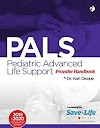- ✅ HOME
- 📚 Health Sciences
- _SEE ALSO
- __Internship الإمتياز
- __USMLE
- __تفريغات طبية Notes
- __Medical APPs
- __Videos
- __MP3
- __MRCOG
- __MRCS
- __PLAB
- __MRCP
- __كتب طبية معربة
- __AMC
- __أسئلة و اختبارات MCQ
- _MEDICINE
- __Anatomy
- __Physiology
- __Histology
- __Biochemistry
- __Pathology
- __Pharmacology
- __Microbiology
- __Bacteriology & Myco.
- __Virology
- __Parasitology
- __Immunology
- __Internal Medicine
- __Dermatology+Andr.
- __Psychiatry
- __Radiology
- __Surgery
- __ENT
- __Ophthalmology
- __Orthopedics
- __Pediatric
- __Gynecology & Obs.
- __Forensic
- __Toxicology
- __Community Medicine
- __specialities
- ___CVS Diseases
- ___Nephrology
- ___GIT Diseases
- ___Obstetrics And Gyne.
- ___General Surgery
- ___Neurosurgery
- ___Pediatric Surgery
- ___Plastic Surgery
- ___Cardiac Surgery
- ___Neonatology
- ___Family Medicine
- ___Community Medicine
- ___Anesthesia & ICU
- ___Dermatology Specialty
- ___Psychiatry Specialty
- ___Psychiatry
- ___Ophthalmology
- ___ENT & H&N Surgery
- ___Oral Maxillofacial S.
- ___Emergency Medicine
- ___Skeletal Imaging
- ___BREAST IMAGING
- ___Neuro-Radio imaging
- ___Orthopedics Specialty
- ___Urology Specialty
- ___Pathology Specialty
- _Dentistry
- __General Anatomy
- __Physiology
- __Histology
- __Biochemistry
- __Pathology
- __Microbiology
- __Bacteriology and Myco.
- __Virology
- __Parasitology
- __Immunology
- __Pharmacology
- __Oral Pathology
- __Oral Histology
- __Operative Dentistry
- __R. Prosthodontics
- __Biomaterials
- __General Medicine
- __General Surgery
- __Anesthesia
- __Oral Radiology
- __Oral Diagnosis -Planning
- __Endodontics
- __Fixed Prosthodontics
- __Periodontics
- __Pediatric dentistry
- __Orthodontics
- __Oral Surgery
- __Oral Medicine
- __Aesthetics
- _Pharmacy
- __Medicinal Plants
- __Organic Chemistry
- __Analytical Chemistry
- __Medical Terminology
- __Physical Pharmacy
- __Accounting and Pharmacy
- __Pharmacognosy
- __Anatomy
- __Physiology
- __Histology
- __Pathology
- __Psychology
- __Phytochemistry
- __Pharmacology
- __Microbiology
- __Bacteriology and Myco.
- __Virology
- __Parasitology
- __Immunology
- __Biochemistry
- __Hospital Pharmacy
- __Phytotherapy
- __Community Pharmacy
- __Clinical Chemistry
- __Pharm. Chemistry
- __Pharmacokinetics
- __Toxicology
- __First Aid
- __Industrial Pharmacy
- __Pharm. Microbiology
- __Clinical Pharmacy
- _Nursing
- __Medical Terminology
- __Microbiology
- __Bacteriology and Myco.
- __Virology
- __Parasitology
- __Immunology
- __Anatomy
- __Physiology
- __Biochemistry
- __Fundamentals-Nursing
- __Nutrition
- __Pathology
- __Med-Surgical Nursing
- __Psychology
- __Pharmacology
- __Psychiatric Nursing
- __Obs and Gyne Nursing
- __Nursing Management
- __Pediatric Nursing
- __Critical Care Nursing
- __Geriatric Nursing
- __Community Health Nursing
- __Nursing Informatics
- _Medical Laboratory
- __Medical Tech Skills
- __Instrumentation
- __Physiology
- __Biochemistry
- __Hematology
- __Immunology
- __Genetics- Molecular Bio.
- __Coagulation-Hemostasis
- __Diagnostic Microbiology
- __Blood Bank
- __Urinalysis and Body Fluids
- _Learning English
- 🔗 REPORT BROKEN LINK
- 🕬 Advertise with Us
Microbiology
PARASITOLOGY FOR MEDICAL LABORATORY TECHNICIANS is the ideal text to guide readers in understanding the background, source, recovery, and identification of a well-representative range of organisms that commonly affect humans. This book organizes a complex set of topics into an understandable and easy-to-read format that will help readers learn more about parasitic infections and how to effectively collect and prepare samples, aiding in the diagnosis of parasitosis. The subtle differences between similar parasitic organisms are all explained in a simple and easily understood manner, increasing the likelihood that readers will be able to recover the parasites, prepare them for identification and, subsequently, ensure effective treatment.
Table of contents :
Cover......Page 1
Title Page......Page 2
Copyright......Page 4
TABLE OF CONTENTS......Page 5
PREFACE......Page 15
CHAPTER 1 BACKGROUND OF PARASITOLOGY......Page 21
Description of the Meaning of the Word Parasite......Page 22
Pathogenicity of Parasites......Page 23
Hosts Required in Parasitic Infections......Page 24
Transmission of Parasitic Infections......Page 25
Diagnosis of Parasitic Infection......Page 26
Impact on Human Health by Parasites......Page 27
Spread of an Ectoparasite......Page 28
Spread of Intestinal Helminths and Protozoa......Page 29
Earliest Evidence of Parasitic Infections in Man......Page 30
Archaeological Evidence of Parasitic Infections......Page 31
Classification of Parasites......Page 32
CHAPTER 2 EPIDEMIOLOGY AND CONDITIONS LEADING TO PARASITIC INFESTATIONS......Page 35
Epidemiological Surveillance......Page 36
Signs and Symptoms of Parasitic Infections......Page 38
Eosinophilia......Page 39
Conditions Leading to Parasitic Infestation......Page 40
How Parasites Are Commonly Contracted......Page 41
Protozoa......Page 42
Bloodborne Protozoa......Page 43
Routes of Parasitic Infection......Page 44
Direct Testing for Parasites......Page 45
Identification of Parasites and Their Ova in Body Fluids and Wastes......Page 47
Treating Infection by Parasites......Page 49
Avoiding Risk of Parasitic Infection......Page 50
Other Considerations for Effective Identification and Treatment for Parasites......Page 51
CHAPTER 3 PROTOZOAL MICROORGANISMS AS INTESTINAL PARASITES......Page 55
Classification of Protozoa......Page 56
Balantidium coli......Page 57
Life Cycle......Page 58
Disease Transmission......Page 59
Symptoms......Page 60
Life Cycle......Page 61
Treatment and Prevention......Page 62
Morphology......Page 63
Life Cycle......Page 65
Symptoms......Page 66
Life Cycle......Page 67
Morphology......Page 68
Laboratory Diagnosis......Page 69
Treatment and Prevention......Page 70
Morphology......Page 71
Life Cycle......Page 72
Laboratory Diagnosis......Page 73
Morphology......Page 74
Symptoms......Page 76
Other Important Amoebal Organisms in Intestinal Parasitosis......Page 77
Morphology......Page 78
Morphology......Page 79
Endolimax nana......Page 80
Morphology......Page 81
Laboratory Diagnosis......Page 82
Identifying Miscellaneous Amoeboid Infections......Page 83
Treatment and Prevention......Page 84
Other Associated Conditions of Intestinal Infections......Page 85
Entamoeba gingivalis......Page 86
Cryptosporidium parvum......Page 87
Life Cycle......Page 88
Treatment and Prevention......Page 89
Laboratory Diagnosis......Page 90
Disease Transmission......Page 92
Treatment and Prevention......Page 93
CHAPTER 4 BLOOD (INTRACELLULAR) AND OTHER TISSUE PROTOZOA......Page 97
Symptoms......Page 98
Laboratory Diagnosis......Page 99
Leishmaniasis (Old World Cutaneous Leishmaniasis)......Page 100
Symptoms......Page 101
Laboratory Diagnosis......Page 102
Malaria......Page 103
Life Cycle......Page 105
Laboratory Diagnosis......Page 106
Treatment and Prevention......Page 107
Toxoplasma spp., Toxoplasmosis, and Infections Caused by Related Organisms......Page 108
Life Cycle......Page 109
Disease Transmission......Page 110
Trypanosoma cruzi......Page 111
Disease Transmission......Page 112
Laboratory Diagnosis......Page 113
African trypanosomiasis......Page 114
Symptoms......Page 115
Lymphatic Filariasis......Page 116
Life Cycle......Page 117
Epidemiology of Filariasis......Page 118
Clinical Signs of Filariasis......Page 120
Laboratory Diagnosis......Page 121
Identification of Major Microfilarial Organisms......Page 122
Life Cycle......Page 123
Treatment and Prevention......Page 124
Life Cycle......Page 125
Treatment and Prevention......Page 127
Symptoms......Page 128
Life Cycle......Page 129
Treatment and Prevention......Page 130
Treatment and Prevention......Page 131
Treatment and Prevention......Page 132
Treatment and Prevention......Page 133
Disease Transmission......Page 134
Treatment and Prevention......Page 135
CHAPTER 5 EPIDEMIOLOGY OF NEMATODES, CESTODES, AND TREMATODES......Page 139
Introduction......Page 140
Nematodes......Page 141
History of Hookworm Infections......Page 142
Treatment of Hookworm Disease......Page 143
Life Cycle for Hookworms......Page 144
Life Cycle of Tapeworms......Page 145
Cysticercosis......Page 146
Pathology and Immunology of Tapeworm Infections......Page 147
Schistosomiasis (Bilharziasis)......Page 148
Life Cycle of Schistosomes......Page 149
Diagnosis of Schistosomiasis......Page 151
Life Cycle of Pinworms......Page 152
CHAPTER 6 INTESTINAL NEMATODES......Page 155
Pinworms......Page 156
Laboratory Diagnosis......Page 157
Treatment and Prevention......Page 158
Morphology......Page 159
Laboratory Diagnosis......Page 160
Treatment and Prevention......Page 161
Morphology......Page 162
Disease Transmission......Page 163
Treatment and Prevention......Page 164
Symptoms......Page 165
Life Cycle......Page 167
Disease Transmission......Page 169
Treatment and Prevention......Page 170
Strongyloides stercoralis, Differentiating from Hookworm Larvae......Page 173
Strongyloides stercoralis......Page 174
Disease Transmission......Page 175
Laboratory Diagnosis......Page 176
Treatment and Prevention......Page 177
CHAPTER 7 INTESTINAL CESTODES......Page 181
Cysticercosis......Page 182
Epidemiology of Cysticercosis......Page 184
Morphology......Page 185
Life Cycle......Page 186
Treatment and Prevention......Page 187
Taenia saginata/Taenia solium......Page 188
Symptoms......Page 189
Laboratory Diagnosis......Page 190
Treatment and Prevention......Page 191
Life Cycle......Page 192
Hymenolepsis diminuta......Page 193
Laboratory Diagnosis......Page 194
Dipylidium caninum......Page 195
Symptoms......Page 196
Laboratory Diagnosis......Page 197
Treatment and Prevention......Page 198
CHAPTER 8 INTESTINAL TREMATODES......Page 201
Trematode Life Cycle......Page 202
Symptoms......Page 203
Heterophyes heterophyes......Page 204
Life Cycle......Page 205
Life Cycle......Page 206
Life Cycle......Page 207
Laboratory Diagnosis......Page 208
Morphology......Page 209
Paragonimus westermani......Page 210
Life Cycle......Page 211
Laboratory Diagnosis......Page 212
Schistosomes and Schistosomiasis......Page 213
Symptoms......Page 214
Disease Transmission......Page 216
Treatment and Prevention......Page 217
CHAPTER 9 INVASIVE TISSUE PARASITES......Page 219
Morphology......Page 220
Laboratory Diagnosis......Page 221
Encysting of Trichinella spiralis......Page 222
Treatment and Prevention......Page 223
Echinococcosis......Page 224
Treatment and Prevention......Page 225
Life Cycle......Page 226
Laboratory Diagnosis and Disease Progression of Hydatid Disease......Page 228
Transmission and Prevention......Page 229
Symptoms of Hydatid Disease......Page 230
Treatment and Prevention......Page 231
CHAPTER 10 ECTOPARASITES......Page 233
Lice......Page 234
Mites......Page 236
Ticks......Page 239
Fleas......Page 241
Other Less Common Ectoparasites......Page 242
Common Bedbugs......Page 243
Tooth Amoebae......Page 244
CHAPTER 11 ORGANISMS BORNE BY TICKS AND OTHER VECTORS......Page 247
Introduction......Page 248
Ticks and Diseases Commonly Transmitted by These Vectors......Page 249
Avoiding the Contraction of Disease from Tick Bites......Page 252
Lyme Disease......Page 253
Symptoms of Lyme Disease......Page 254
Rocky Mountain Spotted Fever......Page 255
Babesiosis......Page 256
Human Ehrlichiosis in the United States......Page 260
Southern Tick–Associated Rash Illness (STARI)......Page 262
Causes of STARI......Page 263
Tularemia......Page 264
Clinical Symptoms and Microbiological Diagnosis of Tularemia......Page 265
Tick Identification......Page 266
Can the Brown Dog Tick Transmit a Disease-Causing Agent of Humans in the U.S.?......Page 268
CHAPTER 12 LABORATORY PROCEDURES FOR IDENTIFYING PARASITIC ORGANISMS AND THEIR OVA......Page 273
Immunity and Prevention of Parasitic Infections......Page 274
Preventing Infection or Infestation by Parasites......Page 275
Specimen Collection......Page 276
Initial Step for Evaluating Stool Samples......Page 277
Scotch Tape Prep for Pinworms......Page 301
Specimens Collected by Sigmoidoscopic Procedure......Page 302
Calibration of Microscopes Using an Ocular Micrometer......Page 303
Example......Page 304
GLOSSARY......Page 307
INDEX......Page 325
You may like these posts
Search This Site
Visitors Counter
TRENDING

BLS: Qquestion and Answer by (NHCPS)
BLS: Qquestion and Answer by (NHCPS) True or False: The jaw-thrust…

ACLS: Qquestion and Answer by (NHCPS)
ACLS: Qquestion and Answer by (NHCPS) True or False: Synchroni…

جميع كتب التشريح - أناتومي للدكتور سامح دوس (المرجع الذي ينصح به أغلب طلاب الطب) Anatomy books by dr. Sameh doss
جميع كتب التشريح - أناتومي للدكتور سامح دوس ِAnatomy books by…

لطلاب الطب البشري : أفضل مرجع تذاكر منه لكل مادة (تجربتي الشخصية)
لطلاب الطب البشري : أفضل مرجع تذاكر منه كل مادة (تجربتي الشخصي…

جميع كتب د. محمد المطري في الجراحة + جراحة عملي Surgery books by dr. mohamed al matary
جميع كتب د. محمد المطري في الجراحة للتحميل Surgery books by dr…

Internal Medicine Books, Dr. Ahmed Mowafy (2020-2021)
Internal Medicine Books, Dr. Ahmed Mowafy (2020-2021) كتب الباطنة لـ د/…

Internal medicine Books Dr. Mahmoud Allam (2021)
Internal medicine Books Dr. Mahmoud Allam (2021) كل كتب الباطنة لـ د / …

كورس الأشعة Radiology للدكتور محمود محفوظ (فيديو) + تفربغات
كورس الأشعة Radiology للدكتور محمود محفوظ (فيديو) + تفربغات X…

كل ما تريد معرفته عن اختبار ال OET و كيف تستعد له
السلام عليكم بوست طويل مهم للدكاترة اللي ما زالت في بداية طريق ا…

PALS: Qquestion and Answer by (NHCPS)
PALS: Qquestion and Answer by (NHCPS) True or False: Shock may o…

جميع كتب د. محمد المطري في الجراحة + جراحة عملي Surgery books by dr. mohamed al matary
جميع كتب د. محمد المطري في الجراحة للتحميل Surgery books by dr…

تحميل فيديوهات و ملفات Download Boards & Beyond الخاصة بالاستعداد ل USMLE Step 1
Download FREE Videos & PDFs of Board and Beyond USMLE STEP 1 …

BLS: Qquestion and Answer by (NHCPS)
BLS: Qquestion and Answer by (NHCPS) True or False: The jaw-thrust…

جميع كتب التشريح - أناتومي للدكتور سامح دوس (المرجع الذي ينصح به أغلب طلاب الطب) Anatomy books by dr. Sameh doss
جميع كتب التشريح - أناتومي للدكتور سامح دوس ِAnatomy books by…

ACLS: Qquestion and Answer by (NHCPS)
ACLS: Qquestion and Answer by (NHCPS) True or False: Synchroni…

لطلاب الطب البشري : أفضل مرجع تذاكر منه لكل مادة (تجربتي الشخصية)
لطلاب الطب البشري : أفضل مرجع تذاكر منه كل مادة (تجربتي الشخصي…

كتب و تفريغات و مراجعات الباطنة للدكتور محمد الشافعي
كتب و تفريغات و مراجعات الباطنة للدكتور محمد الشافعي Internal …

Internal Medicine Books, Dr. Ahmed Mowafy (2020-2021)
Internal Medicine Books, Dr. Ahmed Mowafy (2020-2021) كتب الباطنة لـ د/…

كل ما تريد معرفته عن اختبار ال OET و كيف تستعد له
السلام عليكم بوست طويل مهم للدكاترة اللي ما زالت في بداية طريق ا…

Internal medicine Books Dr. Mahmoud Allam (2021)
Internal medicine Books Dr. Mahmoud Allam (2021) كل كتب الباطنة لـ د / …
✅ WE HAVE A TOTAL OF:
Books & Articles.
FOLLOW US
☕ Support Our Work
BTC: 16HDZmgAwtoHcL8huAmZaWJQ2UD9MWGk7o
USDT (TRC20): TYJurLBhjtwGLXQps5ftDxdU925vyR7wHC
اللَّهُمَّ صَلِّ وَسَلِّمْ وَبَارِكْ عَلَى سَيِّدِنَا مُحَمَّدٍ
Created By SoraTemplates | Distributed By Blogger Templates


